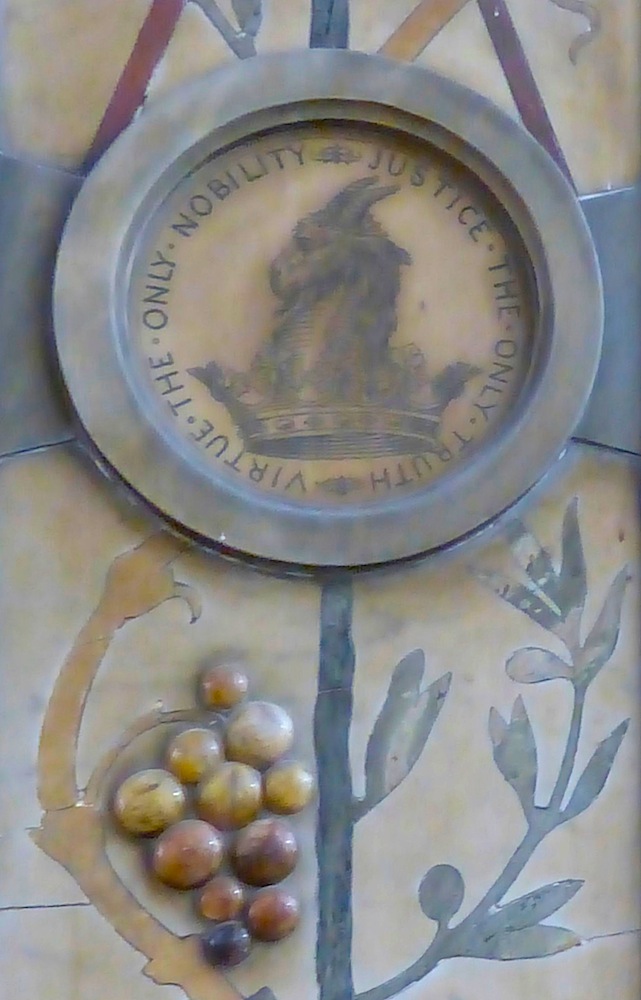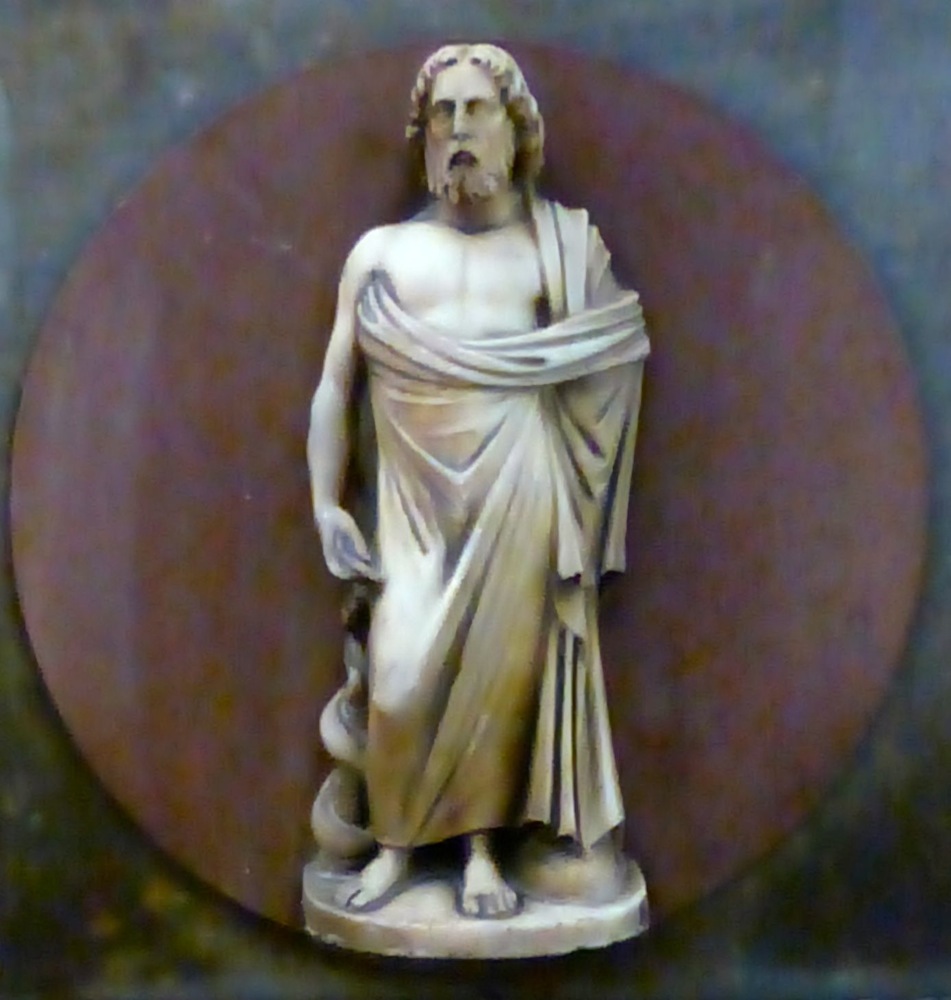

The Yates Memorial,” by Henri de Triqueti, 1870, in the Cruciform Building of University College Hospital London. It is on the first floor landing, just beside the door of the Wolfson Institute. It commemorates the barrister Edward Yates, who died in 1864 at the young age of 36, leaving an endowment to the college's medical school, and was put up in his memory (as stated on the panel itself)” by Charles J. Hare, who had been a professor and physician there. On one side of the inscription tablet is a mother holding a small child, but clearly wilting, and on the other side is a strong, goddess-like figure evidently personifying "Health," administering comfort and medicine.


Left: Detail of the frame. Right: Part of the dedication below the main panel, with Triqueti's signature.
While the panel "ground" is of white Carrarra marble, the whole composition is visibly "much more geologically diverse" than the Mamor Homericum, with many other types of marble used, including black limestone, green mottled serpentinite and yellow Spanish limestone (Siddall et al. 15). The vines in the frame around the central scene rise from Greek vessels, and produce grapes of different colours, to a jewelled effect. The purple grapes are "polished cabochons of amethyst and fluorite, and the yellowish ones of polished alabaster" (Siddall et al. 16). In the photograph to the right, the incised lines are clear, and indeed tarsia-work is sometimes wrongly described as sgraffito. The processes are very different, since tarsia involves not scraping into a ground but, rather, setting marble pieces on a marble ground, engraving details, and filling the incised lines with cement — in Triqueti's case, at this stage of his revival project, with cement of various colours. Triqueti's signature and the date can be seen on the right.


At each of the lower corners of this frame are projecting figures, from their costumes and twining snakes probably Aesculapius, the classical deity of medicine, and his daughter Hygea, the goddess of health. Most likely both were originally coloured, though one has faded. Triqueti's interest in polychromy is clear. This figurative work is only a small part of the whole, but it is important in establishing the work in the province of sculpture, and contributes much to the symbolism here.
Related Material
Photographs by the author with kind permission of University College London. You may use these images without prior permission for any scholarly or educational purpose as long as you (1) credit the photographer, and (2) link your document to this URL or credit the Victorian Web in a print document. Click on the images to enlarge them.
Bibliography
Siddall, Ruth, Wendy Kirk and Eric Robinson. "The Urban Geology of UCL and the University of London." Urban Geology 1: 1-20. Web. 23 May 2016.
Last modified 23 May 2016